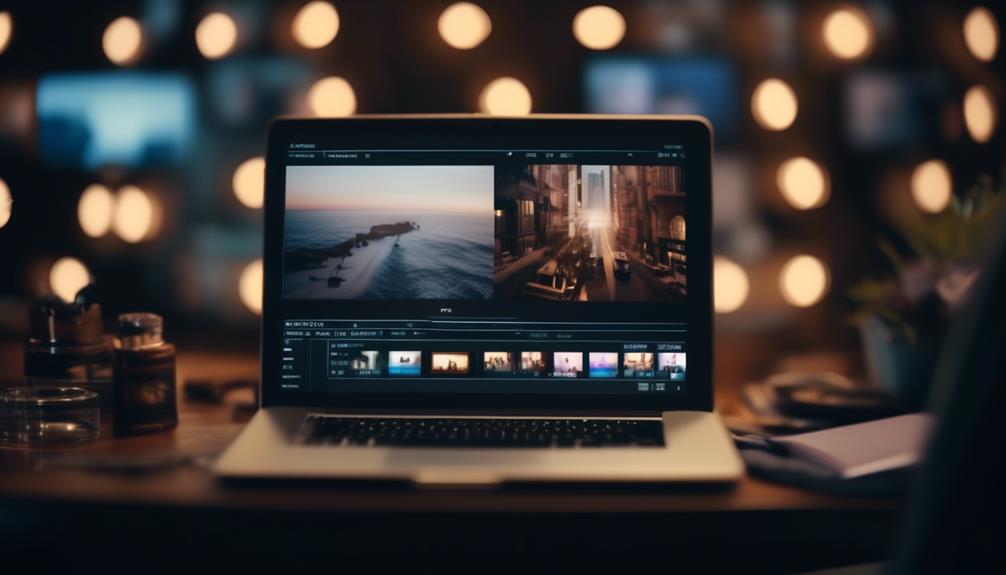In the fast-paced world of video editing, being a virtual assistant with a wide array of skills is like having a Swiss Army knife at your disposal. Imagine yourself as a jack-of-all-trades in the realm of visual storytelling, where every cut, blend, and effect paints a vivid picture for the viewer. But what exactly are the most sought-after skills that can make you stand out in this competitive field? Stay tuned to uncover the key abilities that will elevate your video editing game and set you apart from the rest.
Essential Video Editing Software Skills
To excel in video editing as a virtual assistant, mastering essential software skills is crucial for producing high-quality content efficiently. Understanding the video editing workflow is fundamental. You must be adept at navigating through software interfaces, importing and organizing media assets, making precise cuts, applying transitions, and adding effects to enhance the overall visual appeal of the content. Proficiency in utilizing advanced features like keyframing for animations and color correction tools will set you apart in delivering polished videos.
Remote collaboration techniques are also vital for seamless teamwork. Familiarize yourself with cloud-based storage platforms for sharing large video files securely. Utilize project management tools to track progress, assign tasks, and communicate effectively with team members or clients. Being proficient in video conferencing software enables you to participate in virtual meetings, brainstorm ideas, and receive real-time feedback, ensuring that your edits align with the project requirements. By honing these essential software skills, you can elevate your video editing capabilities and thrive as a virtual assistant in the competitive digital landscape.
Proficiency in Motion Graphics
To excel in motion graphics, you should master animation techniques that bring visual stories to life. Understanding design software is crucial for creating captivating graphics that engage viewers. By honing these skills, you can elevate your video editing projects to the next level.
Animation Techniques
Have you mastered the art of using motion graphics to bring your video editing projects to life? When it comes to animation techniques, proficiency in dynamic transitions and character animation can truly elevate your work. Dynamic transitions help maintain a seamless flow between scenes, enhancing viewer engagement. Character animation adds depth and personality to your videos, making them more relatable and captivating. Moreover, skills like lip syncing and puppet animation are invaluable for creating realistic movements and interactions within your animations. Mastering these techniques will not only showcase your creativity but also set you apart as a skilled video editing virtual assistant with a keen eye for detail. So, dive into these animation techniques and watch your projects come alive!
Design Software Knowledge
Enhance your video editing prowess by delving deep into design software knowledge, specifically focusing on mastering motion graphics proficiency. To excel in this aspect, consider the following:
- Understanding Graphic Design Principles: Learn about color theory, typography, and composition to create visually appealing motion graphics.
- Mastering Video Production Techniques: Comprehend how motion graphics integrate seamlessly with video content, enhancing storytelling and engagement.
- Proficiency in Design Software Tools: Practice using industry-standard software like Adobe After Effects or Premiere Pro to bring your creative vision to life efficiently.
Sound Editing and Mixing Abilities
With your sound editing and mixing abilities, you can transform raw audio into a captivating auditory experience. As a video editing virtual assistant, honing your skills in audio enhancement and sound design is crucial for creating high-quality content. By mastering sound editing techniques, you can ensure that the audio in your videos is crisp, clear, and engaging for viewers.
When it comes to audio enhancement, your ability to remove background noise, adjust volume levels, and fine-tune audio quality can make a significant difference in the overall impact of the video. By paying attention to detail and having a keen ear for sound, you can polish the audio elements to perfection.
Moreover, your sound design skills will allow you to add depth and dimension to the auditory experience. Mixing different audio tracks, adding sound effects, and creating a balanced soundscape will bring your videos to life and immerse viewers in the content. By seamlessly integrating sound with visuals, you can elevate the quality of your video editing projects and stand out as a skilled virtual assistant in the field.
Mastering Color Grading Techniques
To elevate your video editing skills to the next level, delve into mastering color grading techniques for enhancing the visual appeal of your projects. Understanding color correction tips and creative concepts can transform the mood and tone of your videos, making them more engaging and professional. Here are some key points to consider:
- Color Correction Tips: Start by adjusting the exposure, contrast, and white balance of your footage to ensure a neutral starting point for your color grading process. Use tools like curves and levels to fine-tune the colors and overall look of your video.
- Color Grading Strategies: Experiment with different color grading strategies and artistic approaches to achieve the desired aesthetic for your project. Consider creating custom color presets or using LUTs to maintain a consistent look across multiple clips.
- Artistic Approaches: Don’t be afraid to get creative with your color grading. Play around with color schemes, contrasts, and saturation levels to evoke specific emotions or enhance the storytelling aspect of your videos. Remember, mastering color grading techniques can significantly elevate the overall quality of your video editing work.
Storytelling Through Visuals
Now, immerse yourself in the art of visual storytelling to captivate your audience and breathe life into your video projects. Visual storytelling is about more than just putting together a sequence of clips; it’s about conveying a narrative through the creative use of visuals. To master this skill, consider incorporating various creative editing techniques. For example, experiment with different shot compositions to evoke different emotions in your viewers. Use techniques like match cuts or jump cuts to add pace and intrigue to your storytelling. Don’t be afraid to play with color grading to enhance the mood of your story or use overlays and transitions to seamlessly connect different scenes. Remember, each visual element you choose should serve a purpose in advancing the narrative you’re trying to convey. By honing your skills in visual storytelling and embracing creative editing techniques, you’ll be able to craft compelling videos that resonate with your audience on a deeper level.
Expertise in Visual Effects and 3D
Enhance your video editing prowess by mastering the intricacies of visual effects and 3D techniques to elevate the quality and impact of your projects. Dive into the world of cutting-edge effects and immersive visuals with these key skills:
- Virtual Reality Integration: Stay ahead by learning how to seamlessly integrate virtual reality elements into your videos. Understand the technical aspects of virtual reality production and how to incorporate it effectively to engage your audience.
- Advanced Compositing: Elevate your editing skills by delving into advanced compositing techniques. Blend multiple visual elements seamlessly to create stunning visuals that captivate viewers and bring your creative vision to life.
- Augmented Reality Experience and CGI Rendering: Explore the realm of augmented reality and CGI rendering to add a touch of magic to your projects. Master the art of creating realistic augmented reality experiences and harness the power of CGI rendering to craft visuals that leave a lasting impression.
Frequently Asked Questions
How Can a Video Editing Virtual Assistant Improve Their Efficiency and Productivity While Working Remotely?
To improve efficiency and productivity working remotely as a video editing virtual assistant, prioritize time management for streamlined workflows. Enhance communication skills for clear remote collaboration. Actively seek and implement feedback to refine editing skills and deliver high-quality content efficiently.
Are There Any Specific Techniques or Tools That Can Help a Virtual Assistant Stand Out in the Competitive Video Editing Industry?
Want to stand out in video editing? Master advanced editing techniques like color grading and motion tracking. Utilize software tools such as Adobe Premiere Pro and After Effects. Stay updated on industry standards and offer creative solutions.
What Are Some Common Challenges Faced by Video Editing Virtual Assistants and How Can They Overcome Them?
To excel as a video editing VA, master time management for tight deadlines, hone communication skills for clear client interactions. Embrace creative problem-solving to tackle challenges and ensure client satisfaction. Stay adaptable and proactive in your approach.
How Important Is It for a Video Editing Virtual Assistant to Stay Updated With the Latest Trends and Technologies in the Industry?
Staying updated with industry trends and tech is crucial for a video editing virtual assistant. Networking and pursuing industry certifications enhance skills. Continuous learning is key. Evolving keeps you valuable, versatile, and competitive in the field.
In What Ways Can a Video Editing Virtual Assistant Collaborate Effectively With Clients and Team Members to Ensure Successful Project Outcomes?
To collaborate effectively with clients and team members for successful project outcomes, prioritize clear client communication and seamless project coordination. Engage in open dialogue, actively listen, and adapt to feedback. Foster team collaboration through shared goals, transparent communication, and mutual respect.



